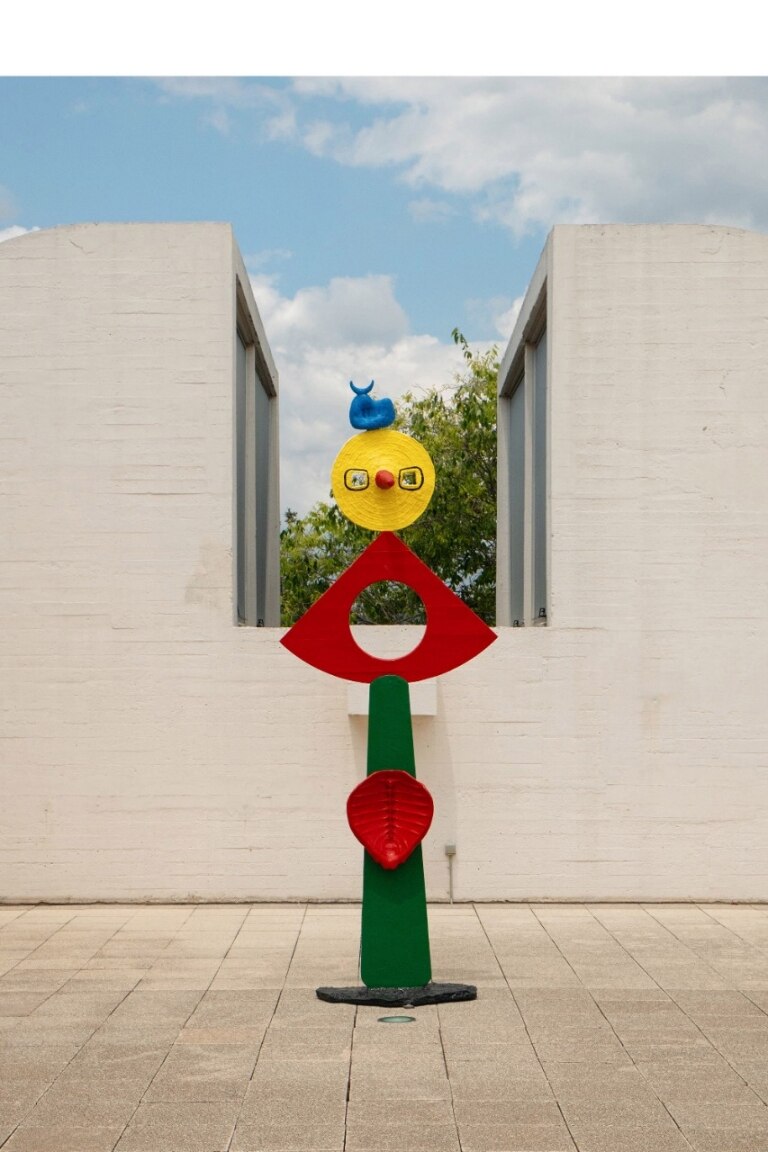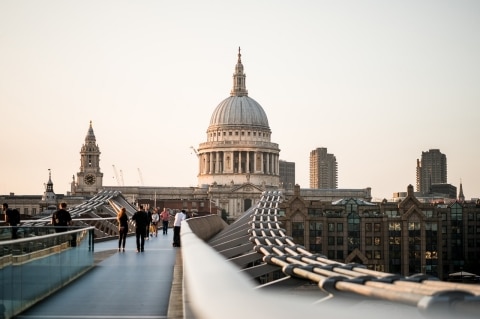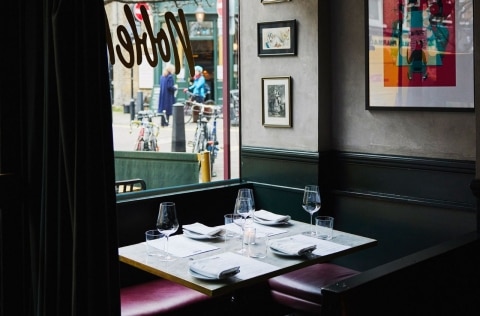The Europe Hot List: 6 of the Most Beautiful Stays to Book
Historic mansions, villas and palazzi are reimagined as some of the most exquisite hotels in Europe’s summer hotspots.

Image credit: Petrakis Alexandros
Aristide Hotel, Syros, Greece
1/7To understand how special Aristide Hotel is, says co-owner Jasmin Aristide, the only thing guests need to know is that she, her sister, Oana, and their mother, Simona, never planned to become hoteliers. “We weren’t looking to open a hotel,” says Jasmin. “We were looking for – and only had the budget for – a holiday apartment. We were shown this house by mistake but were so taken by it that Oana moved to Syros [an island in south-eastern Greece], our mother turned her home in Sweden into storage for the future hotel and I spent five years working in the Arctic to help pay for the mad project.”
Over rosemary-baked fish with local capers in the hotel’s rooftop restaurant, as a gentle breeze blows off the Aegean and the mansion-studded hills of Syros’s seafront darken with the dipping sun, it doesn’t seem like madness at all.
It’s clear on first glimpse of the peachy-pink pile, with its Doric columns of Pentelikon marble, how the Aristides fell under its spell. The property is an architectural jewel among the abundance of crayon-coloured villas of Hermoupolis. But beyond its Neoclassical exterior lies a thoroughly modern hotel where bold colours replace Hellenic whitewash and the walls are crowded with bold figurative art. Nine spectacular suites make up the accommodation, three with terraces and private plunge pools.
That Oana finished writing her first novel (in English, no less) as she restored a rundown mansion on a small island about a four-hour ferry ride from Athens is inspiring. That the Romanian emigrant who grew up in Sweden did it during a world-pausing pandemic is impressive. That she and Jasmin are a macroeconomist and a doctor, respectively, is perhaps a bit much. It’s hard to resent the Aristides, though, once you see what they have wrought from this former shipbuilder’s home.
“We’re not really hoteliers,” says Oana. “We’re an art- and sustainability interested family that happens to run a small hotel.”
Cour des Vosges, Paris, France
2/7It’s easy to miss number 19 – the heavy, unmarked door of the newest hotel on Paris’s oldest planned square is très low-key. Staying at Cour des Vosges, a 17th century townhouse on Place des Vosges in the city’s always happening Marais district, is anything but. In fact, it’s less like a hotel stay and more like scoring an invite to the home of erudite art-lovers with a penchant for ’70s décor and a bit of a sweet tooth.
At the hotel’s Salon de Thé, master pâtissier Yann Brys’ creations vie for attention with the golden magic of the Place des Vosges, a contemporary of the Palace of Versailles. The Salon is responsible for the breakfast trays delivered to guests’ doors so that a glossy, burnished pain au chocolat can be enjoyed in bed, an engrossing tome from the hotel’s collection in hand, crumbs on crisp sheets. Marie Antoinette would approve.
With just 12 rooms (six of them suites), the property is intimate. There’s no formal reception and the on-staff gallerist and bibliophile (official title: book curator) have ensured walls are hung with artworks and shelves bulge with first editions.
The guestrooms, set over three floors, survey the grandeur of the square. Original beams and interior shutters contrast with 1970s chrome pieces and plush chairs. In a first- or second-floor Superior Suite, the ceiling soars five metres, there’s a deckedout kitchenette and the bed is surrounded by stainless steel panels that reduce the world to one large, comfortable mattress.
A secluded Roman-style bath occupies the lower-ground floor, while luxurious in room La Colline treatments replace the spa. Emmanuel Sauvage, managing director of Evok Hotels Collection, recommends the property’s Dolce Vita sur Seine experience, which floats guests upriver aboard an Italian Riva boat towards Île Saint-Louis. “You’ll have an unbeatable view of the monuments of Paris from the glassed-in cabin as you skim the water’s surface,” he says. And there is, of course, champagne.
Image credit: Emily Bowden
Palácio Príncipe Real, Lisbon, Portugal
3/7Some buildings have many lives. They never truly belong to anyone, their occupants mere transitory custodians. Amid the multi-hued façades and palm lined parks of Lisbon’s gilded Príncipe Real quarter, Palácio Príncipe Real, freshly flushed to a deep dusky-pink, is currently under the stewardship of British couple Miles and Gail Curley. They bought the 1877 palace in 2015, lavished it with love and antique blue-and-white tiles (azulejos) until it re-emerged, resplendent, as Lisbon’s most charming new hotel.
The Palácio’s former incarnation as the home of the noble Teixeira da Mota family and its place firmly entrenched at the centre of Lisbon society is fondly recalled by family members who drop in from time to time. “Many of them feel they’re back home when they close the green gates behind them,” says Gail.
The hotel’s guests have a similar feeling. Behind those gates, instead of a reception area there’s a lush, walled garden of gently nodding jacarandas, soaring palms and glossy-leafed lemon trees.
Image credit: Ricky Monti
Passalacqua, Lake Como, Italy
4/7Above the ochre rooftops of Moltrasio on the south-western edge of Lake Como, a magnificent 18th-century villa is ready to welcome guests. A private home until now, it has played host to the great and the good – famously, Passalacqua was the setting for a passionate affair between the married Giuditta Cantù Turina and Vincenzo Bellini, Italy’s most romantic (and caddish) operatic composer. During a stay in 1831, Bellini composed two of his famous works, Norma and La Sonnambula, in the property’s Sala della Musica, now a suite named in his honour (he left Giuditta high and dry but why dwell?).
The villa was acquired in 2018 by the De Santis family of Lake Como hoteliers. Four years and AU$30 million later, it’s a love letter to beauty. Just 12 grand suites in the main villa and a further 12 spread between the Palazzo’s converted stables and the lakefront (Casa al Lago) mean villa life is unhurried and personal.
Rooms in the main house retain the original frescoes and stucco ceilings. Italian artistry can be seen everywhere you look, from the gilded Barbini mirrors to the hand-blown Murano glass chandeliers. Curtains of taffeta made in Como waltz on the breeze. Bathrooms are bedecked in hand-selected slabs of marble hailing from Carrara and Verona and personnel are outfitted by cult Italian label Giuliva Heritage.
If you arrive by boat, all around you’ll see pine-furred Alps tumbling to a halt at the placid, mirror-like lake and magnificent waterfront villas set in palm- and cypress-dotted gardens. Disembark at Passalacqua’s private jetty and you’ll be guided through an underground tunnel that leads to the idyllic ascending gardens. Floating on the wind is the scent of jasmine, burbles of conversation from guests sipping aperitivos on the terrace and, almost always, the wisp of a Bellini opera.
Ett Hem, Stockholm, Sweden
5/7Ett Hem has nothing to hide. There’s no back-of-house at this stay of 22 rooms and three longer-stay apartments occupying three adjacent 1910 townhouses in Stockholm’s upmarket Lärkstaden neighbourhood. No “staff only” signs or phone-wielding receptionists. That’s because Ett Hem – it simply means “a home” in Swedish – was conceived as something more meaningful than a luxury hotel.
Of course, it’s a home better equipped and more carefully designed than most. Owner Jeanette Mix scoured the globe and worked with renowned interior designer Ilse Crawford to put together the collection of art, furnishings and fixtures that make the property an aesthete’s dream.
Many hotels discourage general hanging about but at Ett Hem, guests have the run of the house. That could mean tinkling away on the grand piano in the living room or sinking into a soft sofa with a book from the regularly updated library. Guests are welcome to pour a glass of wine and take up a prime spot near the fireplace or carry a steaming cup of coffee through the conservatory and into the courtyard garden. This isn’t just somewhere to rest your head – it’s a place that invites you to interact, where you become a part of the story.
The true heart of Ett Hem, though, is the warm, buzzing kitchen. All meals are created here, in full view of guests who can pop in to chat with the chefs or make special requests. Homemade cakes and biscuits are offered on a help-yourself basis and the communal dining table makes for the most authentic chef’s-table experience, with convivial chatter, music and the clatter of pans accompanying the meal.
Image credit: Miguel Merino
Santo Mauro, Madrid, Spain
6/7Much like its location, Santo Mauro is tasteful, opulent and discreet. Taking its place among the mansions and palaces of Madrid’s leafy Chamberí neighbourhood, a short hop from the Prado and city centre and a 15-minute walk from the upmarket stores of Calle de Serrano, the 49-room hotel consists of three buildings. The grandest of them is a mansion built in 1894, the one-time home of Duke Mariano Fernández de Henestrosa y Ortiz de Mioño, known simply as the Duke of Santo Mauro.
Stepping into the property is a sensory experience. First, it’s the fragrance of fresh flowers. Next, the eyes are overwhelmed by extravagant furnishings and décor, evoking the French-influenced Madrid of the Duke’s time. Finally, a lilting soundtrack composed by in-house musical director Lucas Vidal. At the gilded Gresca Wine Bar, a Casilda cocktail – the Duchess of Santo Mauro’s favourite – is a piquant combination of vodka, Campari and chestnut syrup made from ancient chestnut trees in the garden. But most thrilling is the sound of your shoes clacking as you mount the magnificent central marble staircase.
If the communal areas are visually staggering – the Red Room features every shade from coral to carmine – the 33 rooms and 16 suites are serene in champagne, green and ecru. Minibars go beyond the standard, with tasting platters and local wine.
While the service and surroundings evoke feelings of nobility, the only way to truly role-play royalty is to take up residence in the Duke’s Royal Suite. Located in the main palace, it was once his bedroom. Original light fixtures on the soaring ceilings cast a golden glow over green velvet walls; there are two king bedrooms, a living room and a decadent marble bathroom. Stand by the windows and survey your domain.















